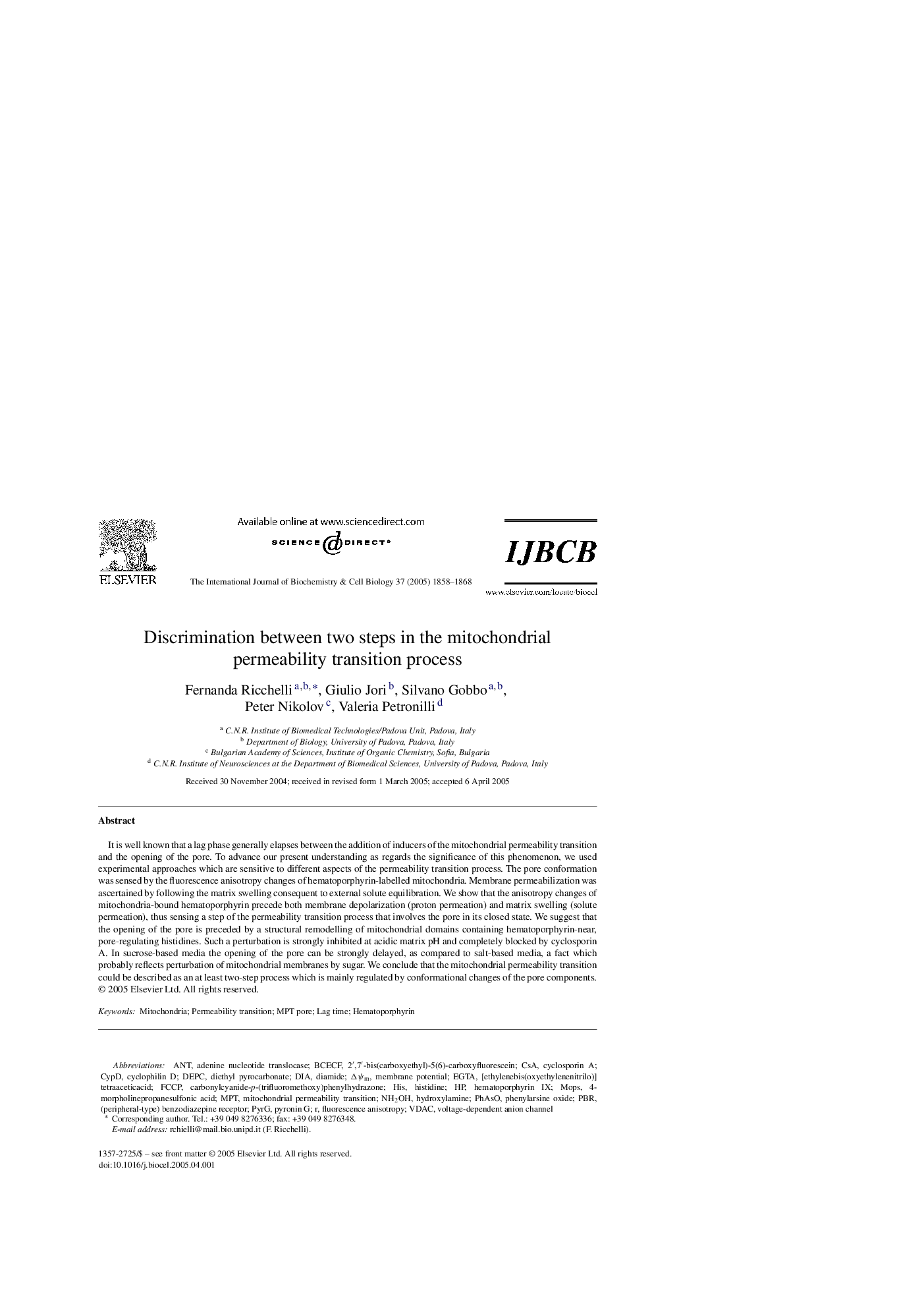| Article ID | Journal | Published Year | Pages | File Type |
|---|---|---|---|---|
| 9889958 | The International Journal of Biochemistry & Cell Biology | 2005 | 11 Pages |
Abstract
It is well known that a lag phase generally elapses between the addition of inducers of the mitochondrial permeability transition and the opening of the pore. To advance our present understanding as regards the significance of this phenomenon, we used experimental approaches which are sensitive to different aspects of the permeability transition process. The pore conformation was sensed by the fluorescence anisotropy changes of hematoporphyrin-labelled mitochondria. Membrane permeabilization was ascertained by following the matrix swelling consequent to external solute equilibration. We show that the anisotropy changes of mitochondria-bound hematoporphyrin precede both membrane depolarization (proton permeation) and matrix swelling (solute permeation), thus sensing a step of the permeability transition process that involves the pore in its closed state. We suggest that the opening of the pore is preceded by a structural remodelling of mitochondrial domains containing hematoporphyrin-near, pore-regulating histidines. Such a perturbation is strongly inhibited at acidic matrix pH and completely blocked by cyclosporin A. In sucrose-based media the opening of the pore can be strongly delayed, as compared to salt-based media, a fact which probably reflects perturbation of mitochondrial membranes by sugar. We conclude that the mitochondrial permeability transition could be described as an at least two-step process which is mainly regulated by conformational changes of the pore components.
Keywords
PhAsOCypDMOPSCyclophilin DBCECFVDACΔΨmpyrGFCCPDEPCMPTANTNH2OHHematoporphyrin IXEGTAPBR4-morpholinepropanesulfonic acidPermeability transitionmitochondrial permeability transitionPhenylarsine oxideCSAFluorescence anisotropyadenine nucleotide translocaseHISDiamidediethyl pyrocarbonateDIALag timecyclosporin AMitochondriaHematoporphyrinHydroxylaminehistidineMembrane potentialvoltage-dependent anion channel
Related Topics
Life Sciences
Biochemistry, Genetics and Molecular Biology
Biochemistry
Authors
Fernanda Ricchelli, Giulio Jori, Silvano Gobbo, Peter Nikolov, Valeria Petronilli,
